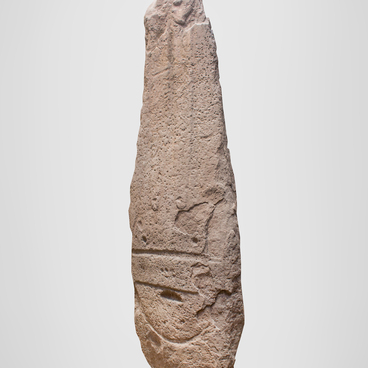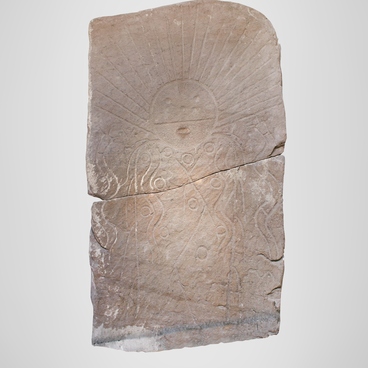The statue from the valley of Lake Bele in the Shirinsky region of the Republic of Khakassia was used as a building material in the construction of the Tagar kurgan.
The Tagar culture is the archaeological culture of the Bronze Age and Iron Age of the 8th — 3rd centuries BC. It got its name from the Tagarsky Island on the Yenisey River. In the early 1920s, the historian Sergei Teploukhov studied such monuments and divided them into several chronological groups. He called this era the Minusinsk Kurgan culture. This division has survived to this day, but the name of the culture has not stuck. Later, the archaeologist Sergei Kiselev proposed another name — the Tagar culture — and it became generally accepted.
In the 6th-4th centuries BC, the Tagars built burial mounds for their leaders in the steppes of southern Siberia. For example, in the Salbyk area, scientists have discovered about a dozen giant mounds. Over time, they went underground, but initially they were tetrahedral earthen pyramids surrounded by a stone fence.
The statue presented in the exposition, which was used in the construction of the fence of the mound, was created much earlier, by representatives of the Okunev archaeological culture of the late 3- early 2 millennium BC.
On the weathered surface of the stone, cracks and peeling of the surface crust can be seen. The upper part of the monument is broken off. On the side planes of the statue, two images of solar signs, symbols of the sun and the universe have been preserved. Another similar sign is engraved on the back of the stone stele. There you can also see the figures of two cows, partially overlapping each other. In addition, there are round holes carved in different places in the stone.
On the narrow side of the statue, there is a mask with bull horns and ears, with a long thin nose. There are wrinkles on the forehead. Below this mask is an image of a large, wide-open mouth with bared pointed canines, rounded molars and a long tongue thickening towards the end. Most likely, the drawing depicts a bear. A special feature of this sculpture is the many deep relief curls on the plane of the stone behind the bear’s mouth, probably representing the long hair of the animal.
The Tagar culture is the archaeological culture of the Bronze Age and Iron Age of the 8th — 3rd centuries BC. It got its name from the Tagarsky Island on the Yenisey River. In the early 1920s, the historian Sergei Teploukhov studied such monuments and divided them into several chronological groups. He called this era the Minusinsk Kurgan culture. This division has survived to this day, but the name of the culture has not stuck. Later, the archaeologist Sergei Kiselev proposed another name — the Tagar culture — and it became generally accepted.
In the 6th-4th centuries BC, the Tagars built burial mounds for their leaders in the steppes of southern Siberia. For example, in the Salbyk area, scientists have discovered about a dozen giant mounds. Over time, they went underground, but initially they were tetrahedral earthen pyramids surrounded by a stone fence.
The statue presented in the exposition, which was used in the construction of the fence of the mound, was created much earlier, by representatives of the Okunev archaeological culture of the late 3- early 2 millennium BC.
On the weathered surface of the stone, cracks and peeling of the surface crust can be seen. The upper part of the monument is broken off. On the side planes of the statue, two images of solar signs, symbols of the sun and the universe have been preserved. Another similar sign is engraved on the back of the stone stele. There you can also see the figures of two cows, partially overlapping each other. In addition, there are round holes carved in different places in the stone.
On the narrow side of the statue, there is a mask with bull horns and ears, with a long thin nose. There are wrinkles on the forehead. Below this mask is an image of a large, wide-open mouth with bared pointed canines, rounded molars and a long tongue thickening towards the end. Most likely, the drawing depicts a bear. A special feature of this sculpture is the many deep relief curls on the plane of the stone behind the bear’s mouth, probably representing the long hair of the animal.



